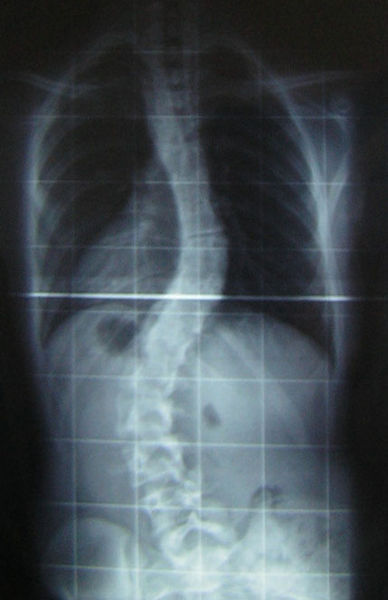New research has found that levels of oxygen in the womb could play a key role in the development of the birth defect congenital scoliosis in genetically susceptible individuals.
Scoliosis is a condition characterised by abnormal curvature of the spine caused by defects in the individual vertebrae and occurs in around 1 in 1000 births.
Congenital birth defects like scoliosis are often a combination of genetic factors and environmental triggers called teratogens. Teratogens can be anything from drugs like thalidomide and alcohol to infections during pregnancy. Now a team led by Duncan Sparrow at the Victor Chang Cardiac Research institute and the University of New South Wales in Australia has found that hypoxia, that's a lack of oxygen, in the womb, could be a teratogen for the development of sporadic congenital scoliosis, in individuals who are heterozygous for two particular genes linked to spine malformation called Hes7 and MESP2.
Most individuals that are heterozygous for these two genes don't develop scoliosis, but some do, a situation known as 'incomplete penetrance'. So what might be causing some of these heterozygous individuals to develop the condition?
Firstly let's look at how scoliosis develops. The defects in the vertebrae arise from incorrect formation of structures in the embryo called somites. These structures develop either side of the neural tube and eventually form the vertebral column, ribs and the skin of the back. If the somites don't form properly, neither will the vertebrae.
Sparrow and his colleagues knew that hypoxia in the womb had been shown to cause defects in the vertebrae of mouse and chick embryos, so they wanted to see how the embryos of mice with mutations in the Hes7 and MESP2 genes would respond to hypoxia. They found that limiting oxygen in the womb dramatically increased the penetrance of the recessive alleles (i.e. the likelihood of developing the condition) and the severity of scoliosis in these mutants, the first time an animal model of congenital scoliosis has been found.
How does lack of oxygen cause a problem? Well the authors suggest that it disrupts the production of key growth factors necessary for the formation of the somites by reducing protein folding in the cells of the embryo.
So could this lead to any tests or treatment? Well, though the authors suggest that the discovery of the interaction between hypoxia in the womb and these two genes in mice does seem to provide an explanation for the incomplete penetrance in humans, we should always be cautious when linking results from mice to potential results in humans, so more work really needs to be done.
The original research paper, and a summary paper by Bajard and Oates are both published in the journal Cell.










Comments
Add a comment